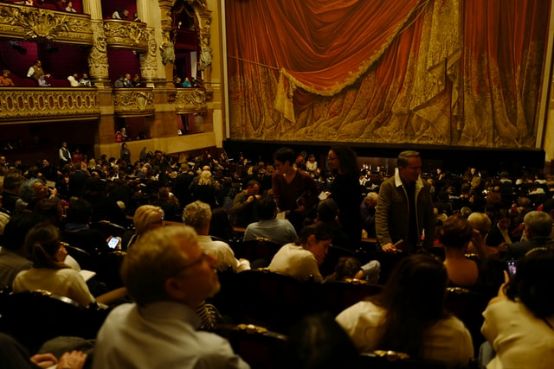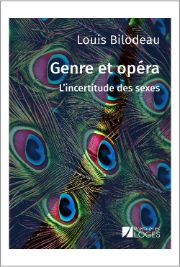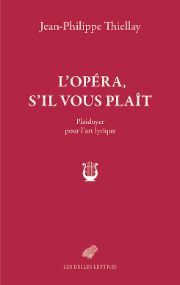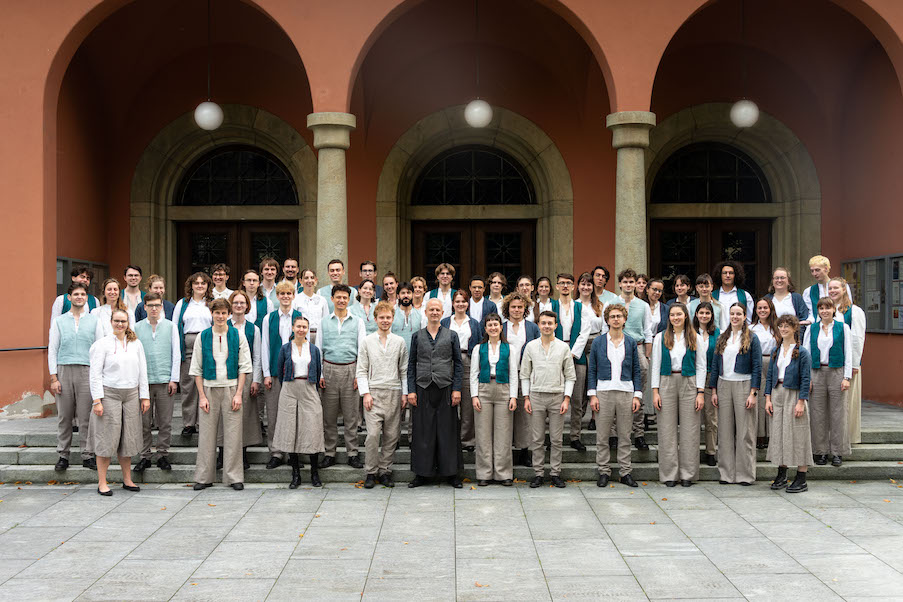The ambiguities of opera
Three books address different facets of opera, its history and current affairs.

In a fascinating synthesis of gender issues in opera, Louis Bilodeau details the transformation of vocal typologies from Monteverdi to the present day, traces the evolution of roles and characters attributed to women, and above all reveals the various ambiguous shimmerings of sexual identities over the course of four centuries of operatic history. Gender fluidity, cross-dressing, the use of castrati and modern countertenors were not always tolerated. While Italian Baroque opera, particularly in the Seicento period, played on these troubling androgynies and deceptive disguises, the France of the absolute monarchy, with its tendency towards machismo, stood out for its refusal of any equivocal role, outlawing castrati and transvestites. While the bourgeois 19th century accentuated sexual dimorphism to the point of caricature, rigidly assigning determined characteristics (most often: innocent, submissive women, virile, conquering men), the 20th and 21st centuries saw very gradual changes, finally leading to the emancipation of women and sexual minorities. The latter, widely present in opera audiences, remained virtually absent from librettos until recently, when this unjust banishment came to an end. At the same time, female composers, librettists, conductors and directors are beginning to make their mark on the opera world.
While the management of opera seasons has always been a balancing act, opera is currently at a crossroads. In a recent book, Jean-Philippe Thiellay, who knows the problem from the inside, having been deputy general director of the Paris Opera among other positions, takes stock of the situation. After an overview of the sociology of the opera-going public, he points out the many dangers (rising production costs, digitalization, increased competition from the abundance of other entertainment activities, fragility in the face of potential changes in politics or the global financial context that can lead to the loss of patrons and sponsors, standardization of the repertoire, stagings that are so out of touch with the spirit of the work as to be confusing) and many other causes for concern, and many other causes for concern), mentions the positive aspects (young people's enthusiasm when given access to performances, construction of opera houses on every continent, creation of new compositions, countless Baroque and Romantic scores resurrected and recorded, economic and tourist importance of opera productions...), before outlining possible solutions to ensure the opera's long-term, high-quality survival, and to overcome the psychological barriers of class, when opera can be enjoyed by everyone, without any social barriers.
Produced by a wide range of specialist contributors, under the direction of Hervé Lacombe, theHistory of French Operathe first two volumes of which were published in 2020 and 2021 (see their presentation published in December 2021), concludes with the third volume covering the period from the early 20th century to the present day. Expansion and diffraction of aesthetics and musical languages, crises and questioning, international openness and welcoming of foreign composers, increase in the number of new works created in the provinces, rediscovery of an ancient repertoire - this broad French lyrical century is marked, like the surrounding world, by diversity as much as by discontinuity and upheaval. Related genres such as comic opera, operetta, musical theater, radio opera and musical comedy are also examined. Cross-disciplinary studies are also included, covering such topics as different stage settings and audio, video and online media, the development of staging and acting by actors and singers, and the main thematic groups addressed in the libretti (among the specific features of recent decades, the proliferation of biographical operas and operas inspired by the Far East is particularly noteworthy).
Louis Bilodeau: Genre et opéra. L'incertitude des sexes, 360 p., € 25.00, Editions Premières Loges, Paris 2022, ISBN: 978-2-84385-387-6
Jean-Philippe Thiellay: L'Opéra, s'il vous plaît. Plaidoyer pour l'art lyrique, 232 p., € 15.00, Editions Les Belles Lettres, Paris 2021, ISBN 978-2-251-45090-2
Hervé Lacombe: Histoire de l'Opéra français XX-XXIe siècles, 1512 p., € 39.00, Fayard, Paris 2022, ISBN 9782213709918











